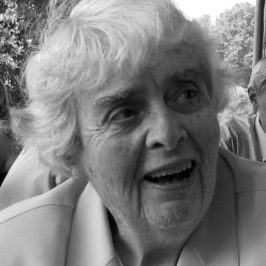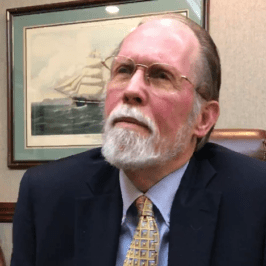

Atmospheric insights, with poems by pilot Ann Darr and Carol Peck.
6 minutes
TRANSCRIPT
Ann Darr was a pilot with the Women Airforce Service Pilots — or WASP — during WWII. She tested planes, towed targets, and flew mapping missions. In its Winter 1994 issue, Passager published an interview with Ann and two of her flight-related poems. Here are some excerpts from that interview.
“When I was three my mother was killed in an automobile accident. She was the only one of the five of us in the car who was even hurt, and she went through the window. I was told I could see my mother again by flying to heaven. And I believed it. I thought someday I would fly with my own arms, or wings, to see my mother. That was where the flying came from. It is such a poetic idea in the first place, flight, it has been a dream of human beings. Pegasus. Icarus. It is a power dream . . . When it turned out that there were civilian pilot training courses being taught in Iowa City, I signed up and was the only woman in a class with nine men . . . Freud would have said this was a death wish, to join the conglomerate blue, but it was heaven I wanted to reach.”
Ann said that flight turns up frequently in her poems, often as metaphor.
Here’s Ann Darr’s poem “An Old Film on TV at the Reunion of the Fifinellas.”
I watch the girl,
Hair flying,
Leap onto the wing
Of an AT6.
I know who she is,
I have made that leap.
I watch those planes
in formation,
precede their moment
of peeling off
with a delicious
NOW
and pull away,
my body arcing,
that small smile
coming up from
my toes and settling
on my mouth.
O clear arc
in the air,
when did I begin
forgetting
I can fly?
Ann Darr’s poem “An Old Film on TV at the Reunion of the Fifinellas.”
Ann was a pioneer in the world of flight. Two other pioneers in that world were Wilbur and Orville Wright from Dayton, Ohio. From 1892 to 1908, they had a shop where they made and repaired bicycles. That experience gave them the mechanical skills they needed to build the first powered flying machine. They flew that first airplane 120 years ago, December 17, 1903, near Kitty Hawk, NC.
This week also marks another sky-related event, the Geminids meteor shower. If you’re in a dark enough place and the sky’s clear, you might be able to see over 100 meteors an hour.
This next poem is not about meteors heading toward the earth, but about a human-made spacecraft heading farther and farther away from earth. In late summer 1977, Voyager II was launched to travel to Jupiter, Saturn, Uranus and Neptune and then to leave the solar system to become a wanderer in space. It did just that five years ago on December 10, 2018. Voyager’s nose cone holds a time capsule that includes a gold and copper phonograph record of some of Earth’s greatest music; the first band is the Allegro movement of J.S. Bach’s “Brandenburg Concerto #2.” This record, which will last an estimated one million years or more, bears the English message: “To the makers of music, all worlds, all times.”
Carol Peck’s poem “Now, Voyager” begins with this epigraph from the 1942 film Now, Voyager, spoken by the character Charlotte Vale, played by Bette Davis: “We have the stars.”
Blazing through the darkness, set to probe
The singing planets and deep space, you hold,
Within your loaded capsule, time out of mind:
Exuberance bound up in spiral gold;
Your vector thrusts you toward infinity,
Safely past the blackest holes in space;
Your victory: survive, endure and find
Receivers for this light from the human race;
Built to last at least one million years,
You push beyond the Music of the Spheres.
But if you should explode, a brilliant shower
Setting those magnetic pulses free,
That golden song of joy will feather out,
Spiral past each brimming galaxy,
Float serene among the dusty stars,
And then soar high on pure electric wings
To bend around the wrinkled edge of time,
Back to the Mind from which all music springs,
Charging all the universe unbound
With ringing holy silence, wholly sound.
“Now, Voyager,” Carol Peck, from Passager Issue 55. Carol said, “I borrowed from Madeleine L’Engle’s book A Wrinkle in Time for my image, “the wrinkled edge of time” and wrote to thank her, enclosing a copy of my poem. She sent me a lovely handwritten reply.”
To subscribe to or learn more about Passager and its commitment to writers over 50, go to passagerbooks.com. You can download Burning Bright from Spotify, Apple and Google Podcasts and various other podcast apps.
For Kendra, Mary, Christine, Rosanne, and the rest of the Passager staff, I’m Jon Shorr.






